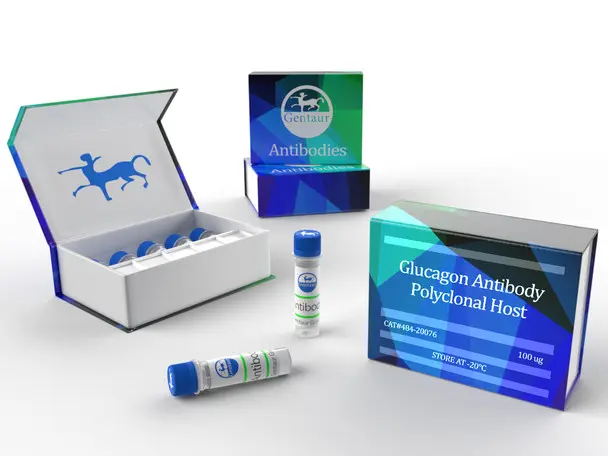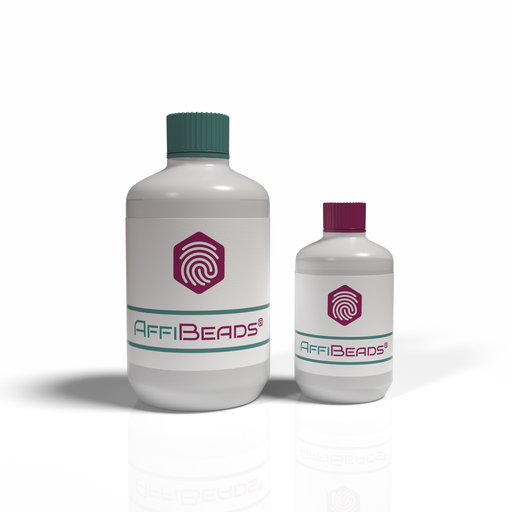Avidin Polystyrene Particles, 5.0%w/v, 1.0 1.9µm 10 mL
Overview of Avidin Polystyrene Particles, 5.0% w/v, 1.0–1.9 µm, 10 mL
Introduction Avidin Polystyrene Particles (5.0% w/v, 1.0–1.9 µm, 10 mL) are a highly specialized reagent system used in molecular biology, biochemistry, and diagnostics for the capture and analysis of biotinylated molecules. Avidin, a tetrameric protein with an extremely high affinity for biotin, is covalently attached to polystyrene microspheres to create a robust platform for a wide variety of applications. These particles, due to their size and surface characteristics, are ideal for use in assays that require efficient, high-capacity binding of biotinylated targets, such as immunoassays, molecular diagnostics, and affinity-based separations.
Composition and Characteristics Avidin Polystyrene Particles are composed of high-quality polystyrene spheres functionalized with avidin on their surface. These particles offer a stable matrix for the avidin protein, which facilitates highly specific binding to biotinylated molecules. The product is dispersed in a 5.0% w/v solution, ensuring a high particle concentration for effective performance in various experimental protocols.
- Polystyrene Matrix: The polystyrene base provides mechanical stability, allowing the particles to retain their shape and structural integrity even under rigorous experimental conditions. It is chemically inert, making it suitable for functionalization and offering minimal nonspecific interactions.
- Avidin Coating: Avidin’s binding affinity for biotin is among the highest known in biology, with a dissociation constant (Kd) in the picomolar range, typically around 10⁻¹³ M. The strong biotin-avidin interaction is fundamental to its use in assays requiring highly specific capture and detection of biotinylated molecules.
- Particle Size (1.0–1.9 µm): The particle size of 1.0–1.9 µm provides an optimal balance between surface area and hydrodynamic properties, making the particles ideal for use in suspension assays and techniques such as magnetic separation, bead-based assays, and flow cytometry. The larger surface area ensures efficient biotin binding, while the size allows the particles to be easily manipulated in standard laboratory workflows.
- Concentration (5.0% w/v): The 5.0% w/v concentration provides a higher density of particles in suspension, facilitating efficient interaction with biotinylated molecules. This concentration is ideal for use in assays that require large amounts of functional particles, such as high-throughput screening, protein purification, and immunoassays.
Applications Avidin Polystyrene Particles are versatile and essential in numerous applications across molecular biology, diagnostics, and biochemistry:
- Immunoassays: These particles are commonly employed in various immunoassays, such as enzyme-linked immunosorbent assays (ELISA) or western blotting. Biotinylated antibodies or antigens are captured by the avidin-coated particles, enabling the detection and quantification of specific targets.
- Magnetic Separation: By combining these particles with magnetic beads, they can be utilized for the separation of biotinylated molecules from complex samples, offering advantages in purification and isolation of proteins, nucleic acids, or other biomolecules.
- Cell Sorting and Detection: The avidin-biotin interaction is used in cell-based assays for capturing or sorting specific cell populations. These particles can be conjugated with fluorophores or other detection tags and used in flow cytometry or magnetic-activated cell sorting (MACS).
- Protein and Nucleic Acid Purification: Avidin Polystyrene Particles are highly effective in affinity purification techniques where biotinylated proteins or nucleic acids need to be selectively isolated from complex mixtures, offering a simple and efficient approach for sample preparation.
- Biosensors and Diagnostics: These particles are widely used in diagnostic assays and biosensors, where rapid detection of biotinylated targets is required. Their high binding capacity and specificity make them ideal candidates for point-of-care diagnostics and environmental monitoring.
- Nanoparticle-Based Drug Delivery: In advanced therapeutic applications, avidin-coated particles can be used to selectively deliver biotinylated therapeutic agents to target cells, allowing for precision drug delivery.
Technical Considerations
- Binding Capacity: The avidin-biotin binding is highly efficient but can be influenced by the experimental conditions, such as pH, temperature, and ionic strength. Optimizing these factors ensures maximal binding capacity and specificity.
- Surface Density of Avidin: The functionalization of polystyrene particles with avidin is carefully optimized to avoid steric hindrance while maintaining sufficient avidin sites for biotin binding. This balance is crucial to minimize nonspecific binding and ensure high specificity in assays.
- Particle Size and Surface Area: The 1.0–1.9 µm size range is suitable for many standard laboratory applications, providing a good surface area for binding while still being compatible with automated systems for high-throughput analyses. However, the larger size compared to smaller beads (sub-micron sizes) provides more robust physical handling in separation processes.
- Particle Dispersion: Proper dispersion of the particles is essential to prevent aggregation and ensure uniform distribution in suspension. The 5.0% w/v concentration allows for efficient particle use in assays requiring a higher particle density.
Conclusion Avidin Polystyrene Particles (5.0% w/v, 1.0–1.9 µm, 10 mL) represent a versatile and highly effective tool in modern laboratory applications. The combination of avidin’s strong biotin-binding capabilities with the stable polystyrene matrix results in a reagent that is invaluable for high-sensitivity assays and molecular isolation techniques. Their wide-ranging applications in immunoassays, cell sorting, protein purification, and biosensors make them indispensable in both research and clinical settings. When properly optimized for specific applications, these particles can significantly improve the efficiency and reliability of experimental results in a variety of scientific disciplines.

